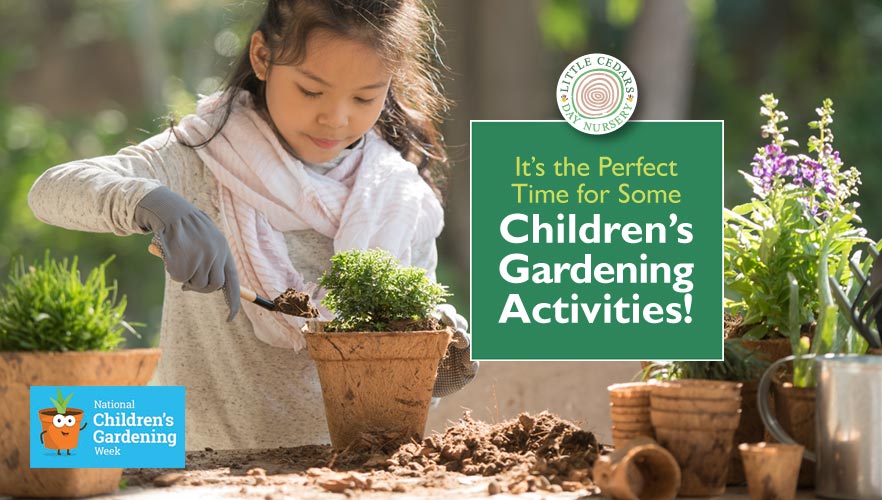
At the time of publishing this article, many UK children are enjoying National Children’s Gardening Week. At this time of year, the weather is sunnier more often, so it’s the perfect time to involve children in gardening activities. Whether taking part in the event or not, gardening is a fun, educational activity for children — and will also help to make the world a better place! So, if you would like to introduce your child to gardening and all that it has to offer little ones, read on as we tell you about some gardening activity ideas that little ones can take part in now and at any time during the warmer months of the year.
National Children’s Gardening Week
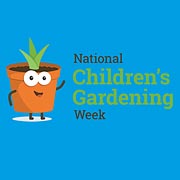 National Children’s Gardening Week takes place each year in the UK during what’s known as the ‘warm week’ beginning right at the end of May. This year (2024) it spans from 25 May to 2 June. However, children can get involved in gardening well outside of those dates*, of course.
National Children’s Gardening Week takes place each year in the UK during what’s known as the ‘warm week’ beginning right at the end of May. This year (2024) it spans from 25 May to 2 June. However, children can get involved in gardening well outside of those dates*, of course.
The annual gardening event for children started in the north of England but now takes place across the whole Nation and, like the plants and flowers in the gardens, its popularity is growing. Indeed, children are taking part at home, in schools, and at childcare settings like nurseries and preschools. In turn, the initiative itself supports the Greenfingers charity, which provides wonderful gardens and outdoor spaces for children in hospices.
* Children Can Garden Any Time in the Warmer Months
Late spring and the summer months in particular make things much easier for children to learn about gardening as there’s negligible chance of frost occurring. Warmer weather makes gardening easier and less complicated for them because, when it’s warm, there is no need to protect plants and seedlings from adverse weather conditions. What’s more, gardening results are much faster during the warmer months of the year, so even less patient children can remain engaged. That said, patience is something every child will have to learn, so a little waiting for results is a good lesson to learn.
Gardening Activities for Children
There are many fun gardening-related activities for children to do during the warmer months. Here are a few ideas to get children and families started.
Grow with Peter Rabbit Activities
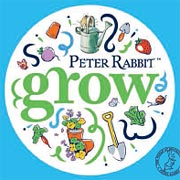 This year (2024), National Children’s Gardening Week has teamed up with The World of Peter Rabbit and is encouraging children and their families to Grow With Peter Rabbit! Free activity booklets for the initiative can be downloaded here. The dozen or so pages in this year’s activity booklet include 9 gardening-related activity ideas for children to take part in. Activities include anything from growing a windowsill herb garden and creating leaf-print cards to more simple tasks like solving garden-related pictorial puzzles. Download the activity booklet using the bold link above.
This year (2024), National Children’s Gardening Week has teamed up with The World of Peter Rabbit and is encouraging children and their families to Grow With Peter Rabbit! Free activity booklets for the initiative can be downloaded here. The dozen or so pages in this year’s activity booklet include 9 gardening-related activity ideas for children to take part in. Activities include anything from growing a windowsill herb garden and creating leaf-print cards to more simple tasks like solving garden-related pictorial puzzles. Download the activity booklet using the bold link above.
Wildflower Growing Activity
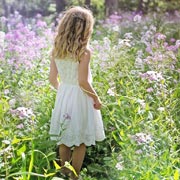 A quick and easy outdoor activity for children is to sow and grow wildflowers (follow the bold link for much more information about this simple but worthwhile activity). Once growing and flowering, wildflowers will brighten up the garden and also attract important pollinators like bees and butterflies. What’s more, this activity is possible using just flower pots or grow bags on a patio or balcony if you don’t have access to a garden. You can also download our free butterfly reference poster for children here.
A quick and easy outdoor activity for children is to sow and grow wildflowers (follow the bold link for much more information about this simple but worthwhile activity). Once growing and flowering, wildflowers will brighten up the garden and also attract important pollinators like bees and butterflies. What’s more, this activity is possible using just flower pots or grow bags on a patio or balcony if you don’t have access to a garden. You can also download our free butterfly reference poster for children here.
Make Simple Bird Feeders
 Did you know, there are some incredibly easy ways for children to make home-made bird feeders? Follow our guide and you’ll soon see how children can make bird feeders from something as simple as a pine cone or even a recycled milk carton. Take a look via the link and get ready to welcome some lovely birds to your patch. Indeed, bird spotting is all part of the fun (download our free bird-spotting poster here).
Did you know, there are some incredibly easy ways for children to make home-made bird feeders? Follow our guide and you’ll soon see how children can make bird feeders from something as simple as a pine cone or even a recycled milk carton. Take a look via the link and get ready to welcome some lovely birds to your patch. Indeed, bird spotting is all part of the fun (download our free bird-spotting poster here).
Composting Activity
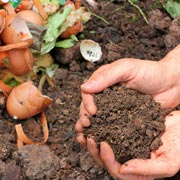 Composting is another hugely worthwhile activity for children to take part in, even right up into the Autumn. It’s easy and a great way to ecologically dispose of waste like egg shells, vegetable peelings, and garden waste like grass cuttings. What’s more, once complete, the household will have a ready supply of nutrient-rich compost that will enrich and feed flowers and plants in the garden or flower pots on the windowsill.
Composting is another hugely worthwhile activity for children to take part in, even right up into the Autumn. It’s easy and a great way to ecologically dispose of waste like egg shells, vegetable peelings, and garden waste like grass cuttings. What’s more, once complete, the household will have a ready supply of nutrient-rich compost that will enrich and feed flowers and plants in the garden or flower pots on the windowsill.
Minibeast Spotting
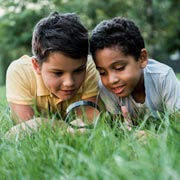 Compost heaps are also wonderful homes for minibeasts, which are also fun and educational for children to spot. Use our previously published free Minibeast Reference Poster to learn how to recognise some of the common minibeasts that might be hiding in gardens, under pots, and in compost heaps around Britain.
Compost heaps are also wonderful homes for minibeasts, which are also fun and educational for children to spot. Use our previously published free Minibeast Reference Poster to learn how to recognise some of the common minibeasts that might be hiding in gardens, under pots, and in compost heaps around Britain.
Wildlife-Friendly Gardening
Try to teach your children how to make gardens wildlife-friendly (whether in back gardens or smaller spaces like patios and balconies). Ensure children understand that wildlife like bees and other flora and fauna are under threat from nasty chemicals and habitat loss. 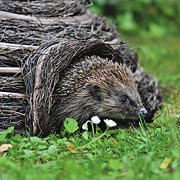 So, making a wildlife-friendly garden or area is a very worthwhile activity for children to take part in — and is educational on so many levels. See our separate guide to wildlife-friendly gardening for kids, try some of the ideas above, or download this free wildlife-friendly activity pack.
So, making a wildlife-friendly garden or area is a very worthwhile activity for children to take part in — and is educational on so many levels. See our separate guide to wildlife-friendly gardening for kids, try some of the ideas above, or download this free wildlife-friendly activity pack.
Indoor ‘Gardening’ Activities for Kids
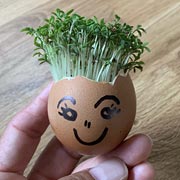 Children can do ‘gardening’ activities indoors too! Get them to try making egg cress heads, for example. It’s an easy, fun activity and children will love the results!
Children can do ‘gardening’ activities indoors too! Get them to try making egg cress heads, for example. It’s an easy, fun activity and children will love the results!
Did you know that children can also grow food from scratch indoors? They’ll love growing microgreens indoors and it can also be done on a windowsill. Not only will it be fun and educational for the children, but they’ll also be able to eat the results! Learn more about growing microgreens indoors here and learn more about the benefits of teaching children to grow food here.
More Gardening Ideas for Kids
More gardening-related activities for children can be found here. At the bottom of that page, you can also use the ‘older entries’ link to discover even more ideas.
Gardening is also a great way to introduce children to the concept of sustainability, ecological matters, and the need to protect both the environment and the planet as a whole. After all, we only have one planet and our children and grandchildren will eventually be in charge of its stewardship. Find out about some additional sustainable gardening activities that children can take part in here.
Why Gardening is Such a Worthwhile Activity for Children
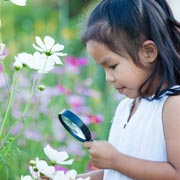 The benefits of gardening for children are many and varied and that’s why it’s such a wonderful activity to get them involved in. It will teach children many new skills and new knowledge. It’ll teach them about the circle of life, how to care and be responsible for other living things, and about the importance of looking after the planet. It will also give them an insight into where some food types come from. It is also great fun, will give children a huge sense of achievement, and may even open their eyes to the possibility of careers in horticulture, land management, food production, farming, and the like. And, of course, gardening makes the world a better place in so many ways. Let’s also not forget that being around nature is hugely beneficial to children, but do remember to follow good safety precautions when children are outdoors.
The benefits of gardening for children are many and varied and that’s why it’s such a wonderful activity to get them involved in. It will teach children many new skills and new knowledge. It’ll teach them about the circle of life, how to care and be responsible for other living things, and about the importance of looking after the planet. It will also give them an insight into where some food types come from. It is also great fun, will give children a huge sense of achievement, and may even open their eyes to the possibility of careers in horticulture, land management, food production, farming, and the like. And, of course, gardening makes the world a better place in so many ways. Let’s also not forget that being around nature is hugely beneficial to children, but do remember to follow good safety precautions when children are outdoors.
Little Cedars Nursery: First-Class Childcare in Streatham
Looking for the best childcare in Streatham or near Tooting, Furzedown, or Balham?

 Little Cedars Nursery also appreciates the importance of nature and outdoor play, so often engages children in such activities in our wonderful outdoor spaces. These include our own planting area where children can grow vegetables! The setting is a first-class nursery and preschool in Streatham and may also suit families nearby in Furzedown, Tooting, Balham, Norbury and Colliers Wood. A full early years education is available here for babies and under-fives, who are given all the tools and guidance they need to thrive once they leave us to begin at school. Government-funded childcare schemes are supported and the nursery is rated by Ofsted as a ‘Good Provider’.
Little Cedars Nursery also appreciates the importance of nature and outdoor play, so often engages children in such activities in our wonderful outdoor spaces. These include our own planting area where children can grow vegetables! The setting is a first-class nursery and preschool in Streatham and may also suit families nearby in Furzedown, Tooting, Balham, Norbury and Colliers Wood. A full early years education is available here for babies and under-fives, who are given all the tools and guidance they need to thrive once they leave us to begin at school. Government-funded childcare schemes are supported and the nursery is rated by Ofsted as a ‘Good Provider’.
So, if you’d like to give your baby, toddler, or preschooler the best start in life in the Streatham region, please get in touch today:


 Combine with our Bird-Spotting Activity
Combine with our Bird-Spotting Activity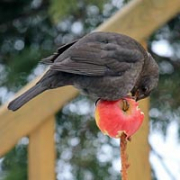 The fastest and easiest bird feeder for children/families to make is simply an apple. This can either be hung with string from a tree branch, bush, or similar, or the apple can be ‘spiked’ on the pointy end of a tree branch, a strong twig or something like a bamboo pole embedded in the ground (so long as it’s tall enough to keep birds safe* from predators). Easy! We suggest stripping some of the apple skin off to expose the flesh. Apples are a particular favourite of blackbirds and bluetits, amongst others.
The fastest and easiest bird feeder for children/families to make is simply an apple. This can either be hung with string from a tree branch, bush, or similar, or the apple can be ‘spiked’ on the pointy end of a tree branch, a strong twig or something like a bamboo pole embedded in the ground (so long as it’s tall enough to keep birds safe* from predators). Easy! We suggest stripping some of the apple skin off to expose the flesh. Apples are a particular favourite of blackbirds and bluetits, amongst others.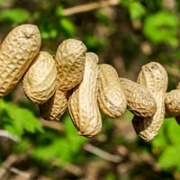 This is also a very easy bird feeder for children/families to make. All you need is some string and some monkey nuts* (peanuts still in their outer husk). A supervising adult will need to make some small holes in one end of each husk and then string can be threaded through to form a kind of chain (like a necklace). Monkey nuts can be threaded on to form the right length and then this can be tied between the branches of a tree, or similar. See our note about safely locating* them, though.
This is also a very easy bird feeder for children/families to make. All you need is some string and some monkey nuts* (peanuts still in their outer husk). A supervising adult will need to make some small holes in one end of each husk and then string can be threaded through to form a kind of chain (like a necklace). Monkey nuts can be threaded on to form the right length and then this can be tied between the branches of a tree, or similar. See our note about safely locating* them, though.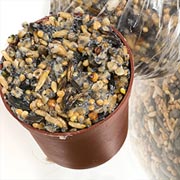 Home-made seed cakes are another type of bird feeder that is both easy and fun for children to make. Basically, they consist of lots of seeds mixed into a ‘cake’ made from either suet* or lard*. The seeds are mixed in when the lard or suet is melted, so parents/adults will need to help with that part as it’s done by heating it in a saucepan. Once melted, the seeds can be added and mixed in. Once cool enough to be safe, the children can take over to make most of the feeders. First, a piece of string can be tied from the centre of the base of something like a flower pot or yoghurt pot (parents should make the hole, if needed). Then the child can mould the seed cake into the pots, or other similar plastic containers. Once cooled, the seed cakes will harden and can then be suspended from the branches of a tree, bush, fence post or under the eaves of a house or outbuilding. Bluetits, great tits, starlings and robins will usually be the first to try out the new cakes.
Home-made seed cakes are another type of bird feeder that is both easy and fun for children to make. Basically, they consist of lots of seeds mixed into a ‘cake’ made from either suet* or lard*. The seeds are mixed in when the lard or suet is melted, so parents/adults will need to help with that part as it’s done by heating it in a saucepan. Once melted, the seeds can be added and mixed in. Once cool enough to be safe, the children can take over to make most of the feeders. First, a piece of string can be tied from the centre of the base of something like a flower pot or yoghurt pot (parents should make the hole, if needed). Then the child can mould the seed cake into the pots, or other similar plastic containers. Once cooled, the seed cakes will harden and can then be suspended from the branches of a tree, bush, fence post or under the eaves of a house or outbuilding. Bluetits, great tits, starlings and robins will usually be the first to try out the new cakes.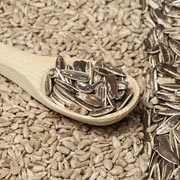 Your choice of seeds directly affects the success – or otherwise – of your bird feeders. While many commercially-available seed mixtures contain several different types of seed, we have found that birds ignore some of them, so they go to waste. Our own bird feeders have been far more popular when they use more sunflower ‘hearts’ (the sunflowers without the other case) and less of the wheat and barley type seeds. Crushed peanuts* are also popular, but see our notes below about the safety of both baby birds and children when it comes to nuts.
Your choice of seeds directly affects the success – or otherwise – of your bird feeders. While many commercially-available seed mixtures contain several different types of seed, we have found that birds ignore some of them, so they go to waste. Our own bird feeders have been far more popular when they use more sunflower ‘hearts’ (the sunflowers without the other case) and less of the wheat and barley type seeds. Crushed peanuts* are also popular, but see our notes below about the safety of both baby birds and children when it comes to nuts.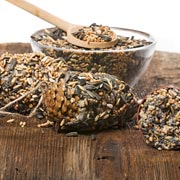
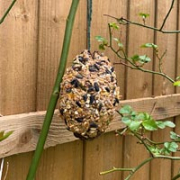 Another type of bird feeder that is both fun and easy to make is a pine cone feeder. All you need is a big pine cone, ideally with the cone splines open, a birdseed mixture and either peanut butter*, suet* or lard*. All your child needs to do is paste the peanut butter (or suet or lard that’s been safely warmed to soften it) all over the pine cone, including into the open splines. Then the whole thing can be rolled over your seed mixture, so the seeds stick all over the pine cone. Once complete, the pine cone feeder can be hung with a piece of string in an appropriate place outside. Even better: hang several together so the birds can’t miss them. The birds will love pecking them when they’re hungry.
Another type of bird feeder that is both fun and easy to make is a pine cone feeder. All you need is a big pine cone, ideally with the cone splines open, a birdseed mixture and either peanut butter*, suet* or lard*. All your child needs to do is paste the peanut butter (or suet or lard that’s been safely warmed to soften it) all over the pine cone, including into the open splines. Then the whole thing can be rolled over your seed mixture, so the seeds stick all over the pine cone. Once complete, the pine cone feeder can be hung with a piece of string in an appropriate place outside. Even better: hang several together so the birds can’t miss them. The birds will love pecking them when they’re hungry.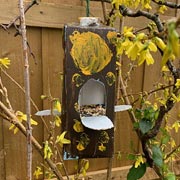 Bird feeders made from recycled cartons can be great fun, fairly easy and can be quite creative. All you need is an empty milk or juice carton, by which we mean the card ‘Tetra Pak’ type, plus some bird seed/food and some string. Parents will need to help younger children safely attach the string to the tops of the cartons and cut flaps/openings into the sides of the carton. These can be folded down, as shown in the photo, and suspended outside somewhere suitable for the birds. For extra creative fun, children can first paint patterns, designs or even faces on the cartons. This type of bird feeder is great because it not only holds the bird food but also potentially gives birds somewhere safe to land while feeding. As they were originally for holding liquid, they can alternatively be used to hold drinking water for birds — or perhaps children can make one for food and another for drinking water.
Bird feeders made from recycled cartons can be great fun, fairly easy and can be quite creative. All you need is an empty milk or juice carton, by which we mean the card ‘Tetra Pak’ type, plus some bird seed/food and some string. Parents will need to help younger children safely attach the string to the tops of the cartons and cut flaps/openings into the sides of the carton. These can be folded down, as shown in the photo, and suspended outside somewhere suitable for the birds. For extra creative fun, children can first paint patterns, designs or even faces on the cartons. This type of bird feeder is great because it not only holds the bird food but also potentially gives birds somewhere safe to land while feeding. As they were originally for holding liquid, they can alternatively be used to hold drinking water for birds — or perhaps children can make one for food and another for drinking water.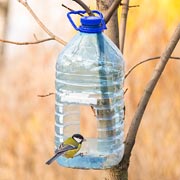
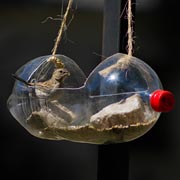 In a similar way, clear plastic bottles can be used as bird feeders or for water. The same approach can be used but flaps are not advised as they’re trickier for children to fold and also plastic bottles will have sharper edges than the carton approach above. So, this particular type of bird feeder needs extra supervision from a parent or adult. Take a look at the photos to see what’s possible, though. One photo (the first small image at the start of this article) even shows a plastic spoon that’s used as a landing platform and seed dispenser, all in one. Once finished, plastic bottle feeders tend to last a long time, so long as they’re regularly cleaned and refilled.
In a similar way, clear plastic bottles can be used as bird feeders or for water. The same approach can be used but flaps are not advised as they’re trickier for children to fold and also plastic bottles will have sharper edges than the carton approach above. So, this particular type of bird feeder needs extra supervision from a parent or adult. Take a look at the photos to see what’s possible, though. One photo (the first small image at the start of this article) even shows a plastic spoon that’s used as a landing platform and seed dispenser, all in one. Once finished, plastic bottle feeders tend to last a long time, so long as they’re regularly cleaned and refilled.